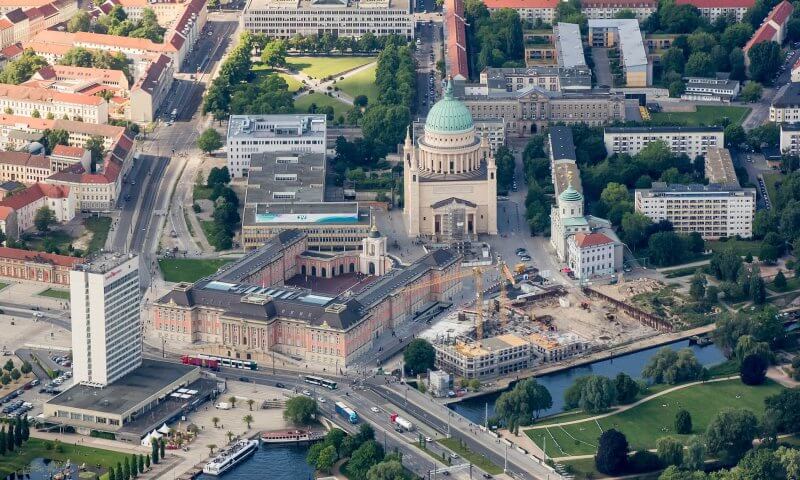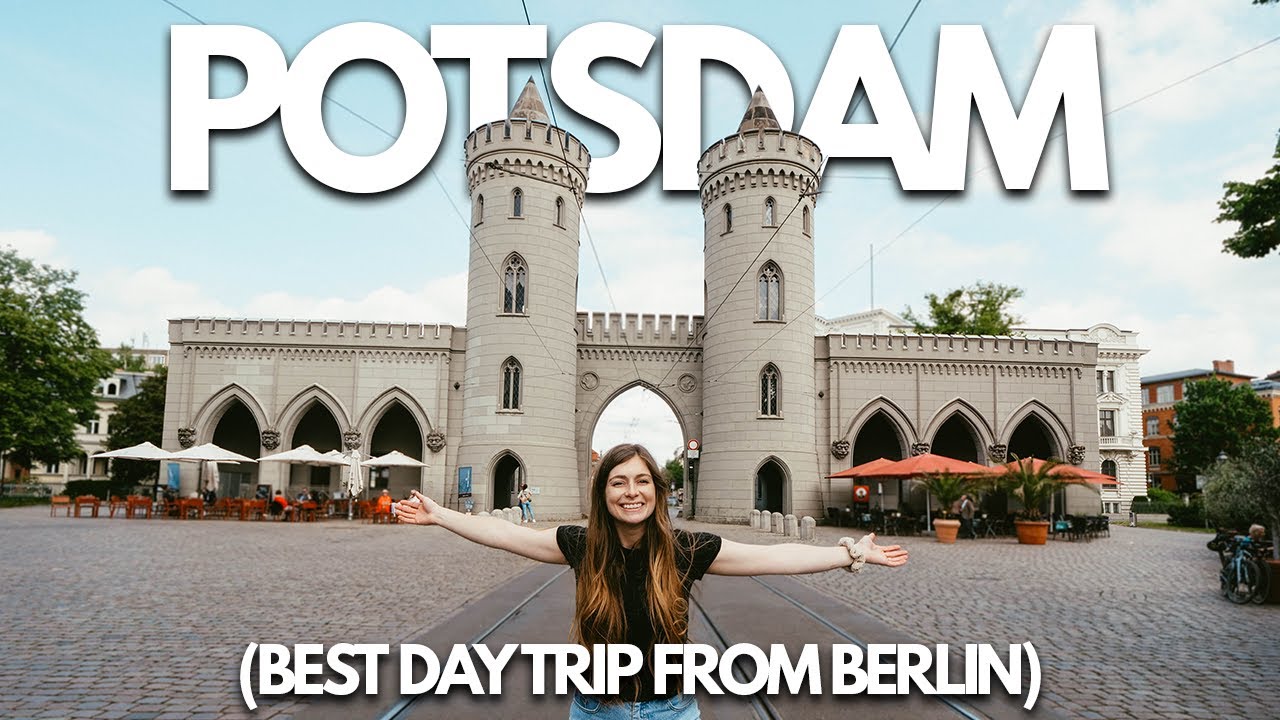Potsdam (Germany) is a city in the eastern part of the country, 20 km south-west of Berlin. It has the status of the capital of the federal state of Brandenburg, while being a non-district city. Potsdam is located on the banks of the Havel River, on a plain with numerous lakes.
The city covers an area of almost 190 km², with about ¾ of the territory occupied by green spaces. The population is approaching 172,000.
Potsdam has undergone an amazing transformation from a small Slavic settlement, first mentioned in 993, to a city that was designated a royal residence in 1660.
Modern Potsdam is one of the most picturesque cities in Germany, and its architecture stands out even on a European scale. Since 1990, the entire cultural urban landscape has been included in the UNESCO World Heritage List.
An interesting fact! After the Berlin Wall was built in 1961, Potsdam, which was located southwest of Berlin and was part of the GDR, found itself right on the border with West Germany. As a result, the travel time from Potsdam to the capital of the GDR increased by half. After the fall of the Wall and the reunification of the GDR with West Germany (1990), Potsdam became the capital of the Brandenburg state.
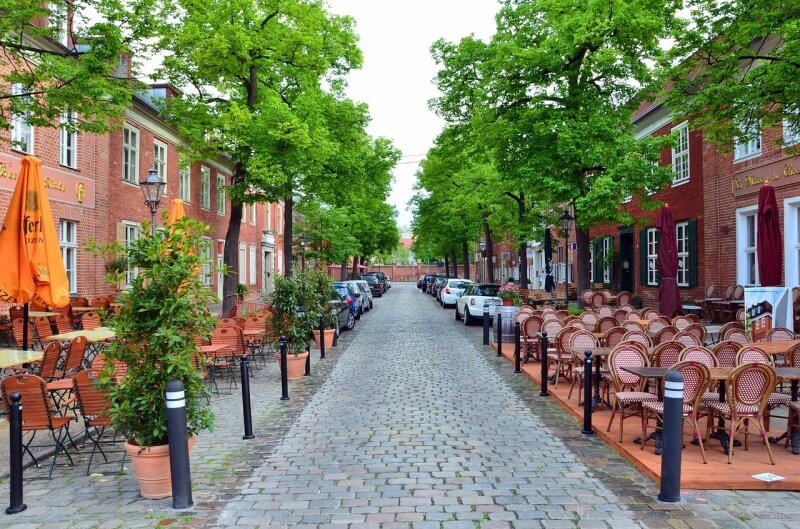
Top attractions
Due to the fact that Potsdam is practically a suburb of Berlin, many tourists visiting the German capital come to visit it on a day trip. Travelers who try to see the sights of Potsdam in one day will find a rich and diverse excursion program.
An interesting fact! This city is home to the oldest large-scale film studio in the world, which has been producing films since 1912 – Babelsberg. Here were created pictures in which the great Marlene Dietrich and Greta Garbo starred. The studio is still working, and to observe some processes, for example, the creation of special effects, visitors are sometimes allowed.
Sanssouci Palace and Park Complex
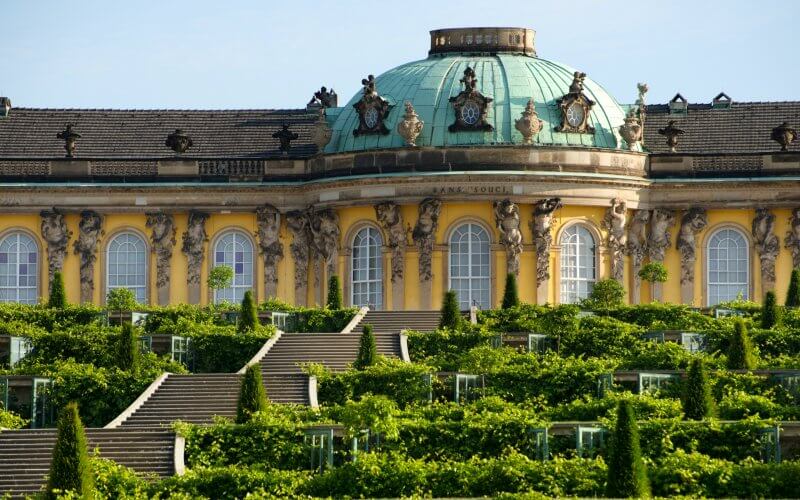
Sanssouci has a well-deserved reputation as the most beautiful and elegant place in Germany. This UNESCO-protected site covers a vast area of 300 hectares, with rolling hills and valleys. The park is home to many unique attractions, including:
- a picturesque terrace with vineyards
- Germany’s first art museum gallery featuring only paintings
- Ancient Temple
- Temple of Friendship
- Roman baths.
However, the most significant structure in the Sanssouci park complex is the palace, the former residence of the kings of Prussia.
An interesting fact! Every year, the Potsdamer Schlössernacht, Germany’s most popular festival, takes place at Sanssouci Palace. The program includes symphony concerts, literary gatherings, and theatrical performances featuring the world’s top artists. Tickets for the event are always limited, so it’s important to purchase them in advance.
New Palace
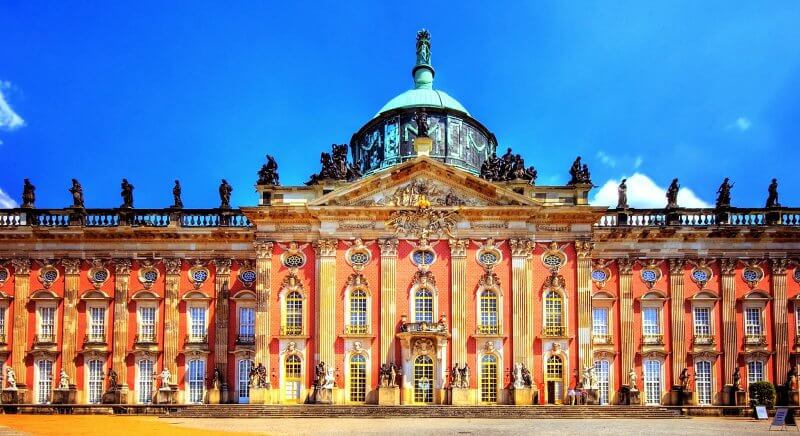
On the western side of the Sanssouci park complex, there is another unique landmark in Potsdam and Germany. This is a baroque ensemble consisting of the luxurious Neues Palais building, the communal buildings, and a triumphal arch with a colonnade. Frederick the Great began construction of the palace in 1763 to showcase the unstoppable power and wealth of Prussia to the world. It took only seven years to complete the project.
The new palace is a long (200 m) three-storey building that seems even taller due to the dome placed in the center of the roof. The 55-meter-high dome is decorated with three graces holding a crown. A total of 267 statues were used to decorate the building, most of which are located on the roof. Heinrich Heine even made a joke: the poet said that there are more people on the roof of the famous building in Potsdam than inside.
Since the Neues Palais was used exclusively by Frederick the Great for work and for accommodating distinguished guests, most of the interior spaces are separate apartments and halls for ceremonies. The halls and offices are decorated with paintings by European artists from the 16th to the 18th centuries. There is also a notable attraction, the Potsdam Gallery, which showcases the history of the palace from its inception to the present day.
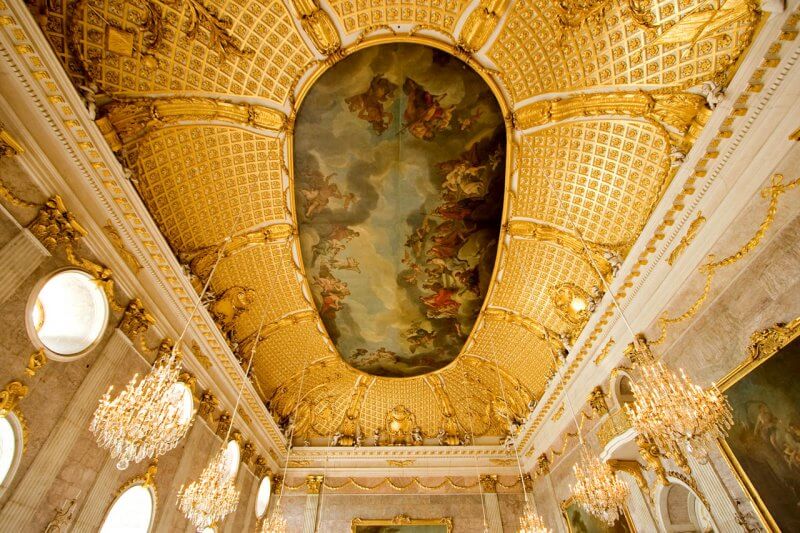
The two floors of the southern wing are occupied by an 18th-century court theater with an interior decorated in a red and white palette with gilding and stucco. There is no royal box in the theater, as Frederick the Great preferred to sit in the third row of the auditorium. Currently, the theater occasionally hosts performances for the public.
The communes served as outbuildings and also blocked the view of the unattractive swamps on the western side of the park. Today, the communes are home to a teacher training university.
Address of the attraction: Neuen Palais, 14469 Potsdam, Brandenburg, Germany.
Visits are possible from April to October from 10:00 a.m. to 6:00 p.m., and from November to March from 10:00 a.m. to 6:00 p.m. Every Monday is a day off, and during peak tourist seasons, access is also restricted on Tuesdays (when scheduled group tours are held).
- The standard ticket costs 8€, and the discounted ticket costs 6€.
- To see all the attractions of the famous Sanssouci complex in Potsdam, Germany, it is more cost-effective to buy a Sanssouci + ticket, which costs 19€ and 14€ for full and reduced rates, respectively.
Zitsilienhof
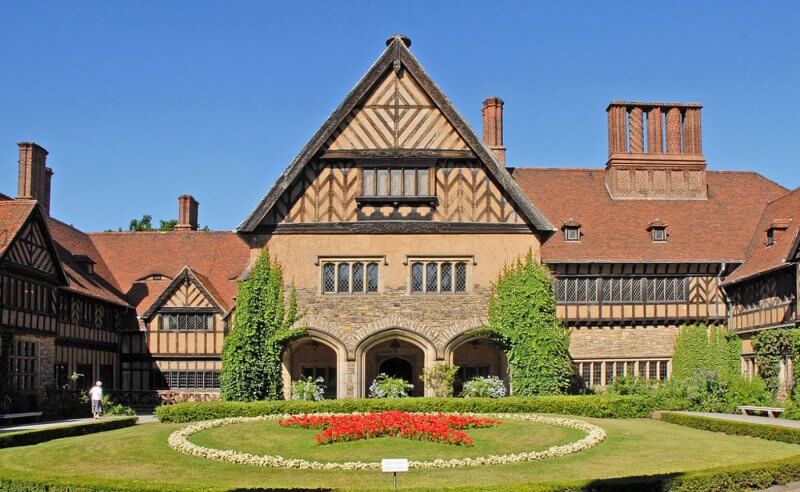
The next famous landmark in Potsdam is Schloss Cecilienhof. This is the last castle built by the Hohenzollern family: it was constructed in 1913-1917 for Prince Wilhelm and his wife, Cecilia.
In an attempt to visually conceal the enormous size of the castle, which had 176 rooms, the architect skillfully arranged the individual buildings around five courtyards. The castle’s roof is adorned with 55 chimneys, some of which are functional while others serve as decorative elements. Each chimney is unique in its own way. The center of the castle is a grand hall, with a spacious wooden staircase leading to the second floor, where the noble couple’s private quarters are located.
An interesting fact! In the summer of 1945, the Potsdam Conference was held at Schloss Cecilienhof, where the leaders of the victorious powers in World War II, Truman, Churchill, and Stalin, met. The Potsdam Agreement, adopted by the Big Three, marked the beginning of a new order in Germany, leading to the division of the country into East and West Germany, with Potsdam remaining in the Eastern territory of the GDR.
A small part of the Cecilienhof Castle now houses the Potsdam Conference Museum. The rooms where the summit was held have been preserved in their original form, and a large round table made by the Soviet Lux factory specifically for this event still stands. In the courtyard, in front of the main entrance, there is an equally well-maintained flower bed that was laid out in 1945 in the shape of a five-pointed red star.
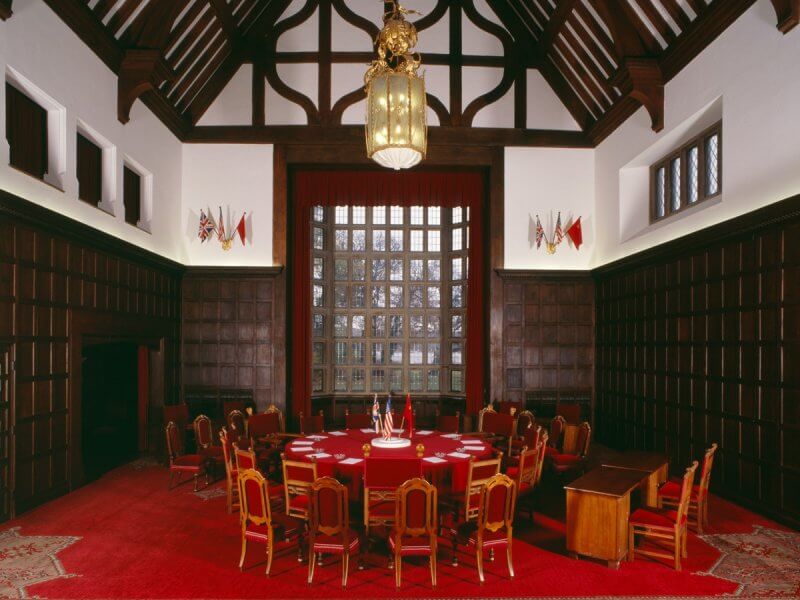
Most of the Cecilienhof premises are occupied by the 4* Relexa Schlosshotel Cecilienhof.
Address of the attraction: Im Neuen Garten 11, 14469 Potsdam, Brandenburg, Germany.
The museum is open from Tuesday to Sunday according to the following schedule:
- April-October: from 10:00 to 17:30;
- November-March: 10:00-16:30.
Cost of the session:
- walk through the adjacent garden;
- Potsdam Conference Museum – 8 € full, 6 € reduced;
- A tour of the private rooms of the Prince and his wife costs 6 € for adults and 5 € for students.
Brandenburg Gate
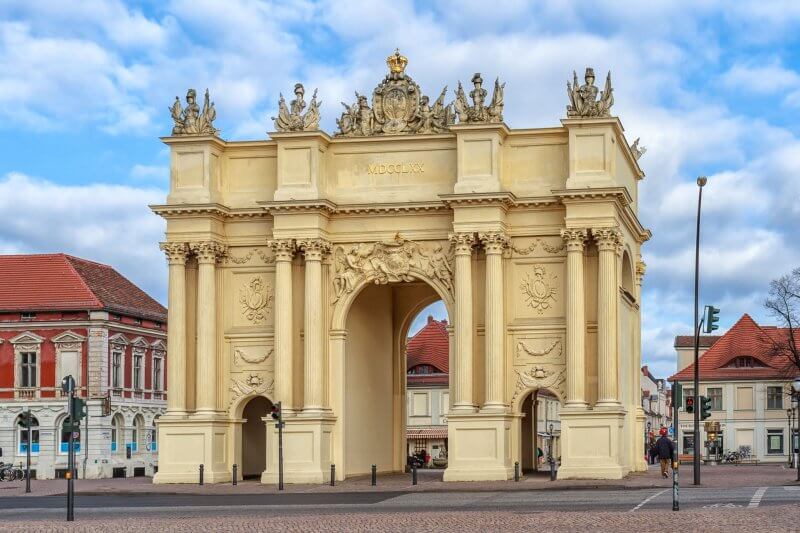
In 1770, to celebrate the end of the Seven Years’ War, King Frederick II the Great ordered the construction of a triumphal arch in Potsdam, which was named the Brandenburg Gate.
The structure was inspired by the Roman Arch of Constantine. However, Brandenburg Gate has a unique feature: it has different facades. This is because the project was designed by two architects, Karl von Gontard and Georg Christian Unger, each of whom created their own facade.
Address of the attraction: Luisenplatz, 14467 Potsdam, Brandenburg, Germany.
Dutch Quarter
In 1733-1740, 134 houses were built in Potsdam for Dutch artisans who came to Germany to work. The houses formed a whole quarter (Holländisches Viertel), divided into four blocks by two streets. The Dutch Quarter’s distinctive architecture, with its red-brick houses, original gutters, and portals, sets it apart from the rest of Potsdam.
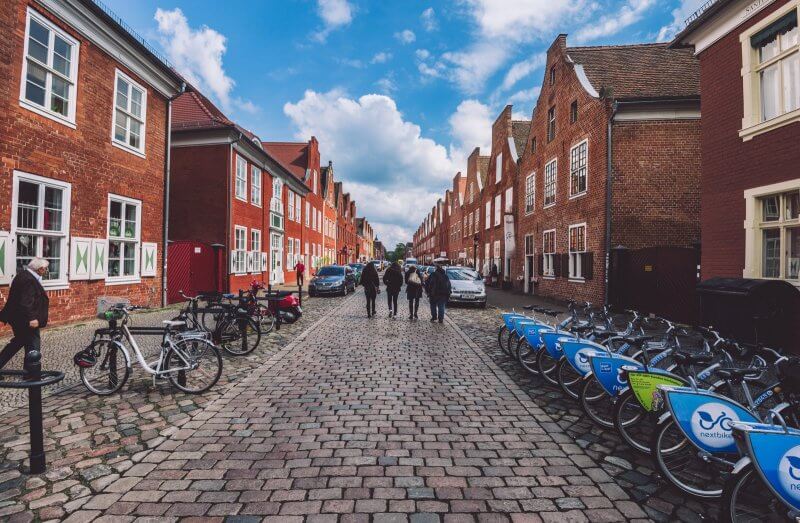
Holländisches Viertel, with its central street Mittelstraße, has long been a tourist highlight of the modern city. The charming houses are home to fashionable boutiques, antique shops, souvenir stores, art galleries, excellent restaurants, and cozy cafes. At Mittelstraße 8, you can visit the Holländisches Viertel exhibition, where you can see 3D models of the neighborhood’s buildings and everyday objects used by the local residents.
And no descriptions or even photos of this Potsdam landmark can convey its full color and atmosphere. That’s why tourists visiting the German city are eager to explore this place as well.
Barberini Museum
In early 2017, a new museum, the Museum Barberini, was opened in Potsdam, in a beautiful three-story building with a white sandstone facade. The museum was built by the philanthropist Hasso Plattner, and its name was inspired by the Barberini Palace, which was destroyed during World War II. This adds another attraction to the list of things to see in Potsdam.
Interesting! Immediately after its opening, the Barberini was named one of the top 10 museum discoveries of the year by the Guardian.
The new art gallery features paintings from the private collection of Hasso Plattner:
- works by Impressionists and Modernists;
- works representing post-war and late GDR art;
- paintings by contemporary artists created after 1989.

Two of the three floors are occupied by temporary exhibitions, which are rotated three times a year. The official website https://www.museum-barberini.com/ provides information about the temporary exhibitions on specific dates.
- Address of the attraction: Humboldtstrasse 5-6, 14467 Potsdam, Brandenburg, Germany.
- Visitors are welcome from 10:00 to 19:00 on any day of the week except Tuesday. Every first Thursday of the month, the exhibitions are open from 10:00 to 21:00.
- Children under 18 years of age are admitted to the museum free of charge. The entrance fee for adults and concessions is 14 € and 10 € respectively. During the last hour of work, the evening ticket is relevant, the full price of which is 8 €, concessionary 6 €.
North Belvedere
The Belvedere on the Pfingstberg, in the northern part of the city, away from the center, is also a worthy attraction. The exterior of the complex (built in 1863) is magnificent: it is a luxurious Italian Renaissance villa with powerful double towers and a vast colonnade.
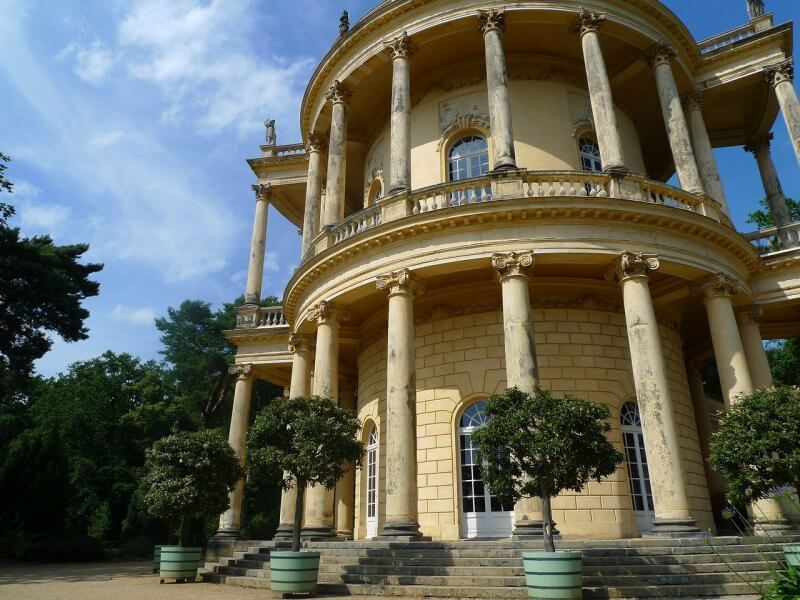
The Belvedere Pfingstberg remained a popular vacation spot for a long time, until the 155-meter-high Berlin Wall was built in 1961, effectively dividing West Germany and East Germany. Since then, the Belvedere, which remained in East Germany along with Potsdam, has been under constant guard. It was a strategic point from which it was possible to enter the neighboring capitalist country. Like many historical sites in East Germany, the Belvedere has gradually fallen into disrepair and decay. It wasn’t until the mid-1990s, after the reunification of the GDR and the FRG, that the beloved place of many citizens was restored.
The belvedere tower has an observation deck with a stunning panoramic view. On a clear day, you can see not only the entire city of Potsdam, but also Berlin, at least the famous Berlin TV Tower.
The North Belvedere can be found at Neuer Garten, 14469 Potsdam, Germany.
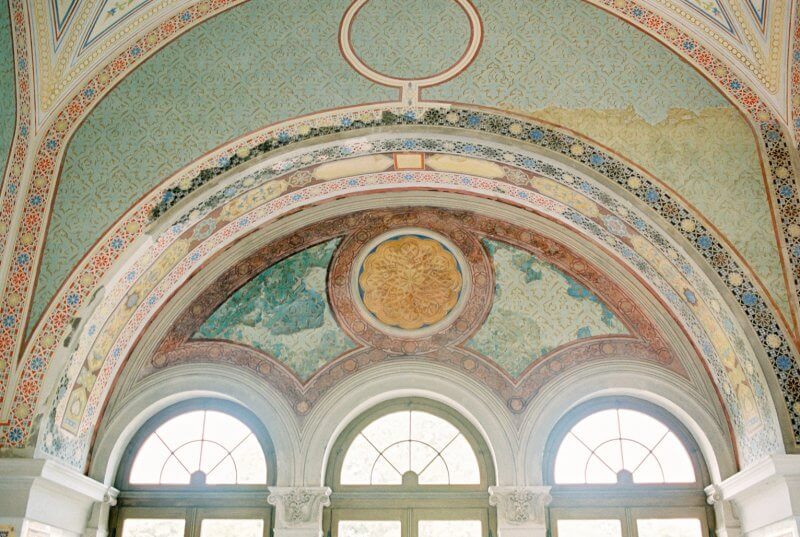
Opening hours:
- in April-October, every day from 10:00 to 18:00;
- In March and November, from 10:00 to 16:00 on Saturdays and Sundays.
Prices are as follows (in euros):
- adult ticket – 4.50;
- discounted ticket (for unemployed people, students under 30, etc.) – 3.50;
- children aged 6 to 16 – 2;
- children under 6 years old can enter for free;
- family ticket (2 adults, 3 children) – 12;
- audio guide-1.
Affordable Housing Options in Potsdam
On the Booking.com service, you can book rooms in more than 120 hotels in Potsdam, as well as numerous private apartments. Almost all of the hotels in this city are rated 3* and 4*. Using various convenient filters, you can always choose the best option, and you can verify the correctness of your choice by reading reviews from other travelers.
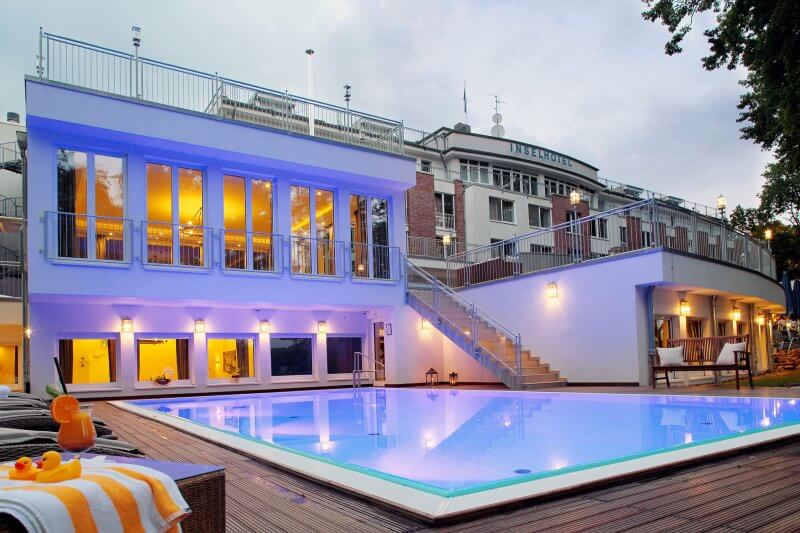
In 3* hotels, double rooms can be found for as low as 75€ and as high as 135€ per night. However, the average prices range from 90€ to 105€.
A double room in a 4* hotel can be rented for 75 – 145€ per day. As for the most common figure, it is 135 – 140€ per room.
A comfortable one-bedroom apartment in Potsdam (Germany) can be rented for an average of 90 – 110€ per day.
How to get there from Berlin
Let’s explore the best way to get from Berlin to Potsdam.
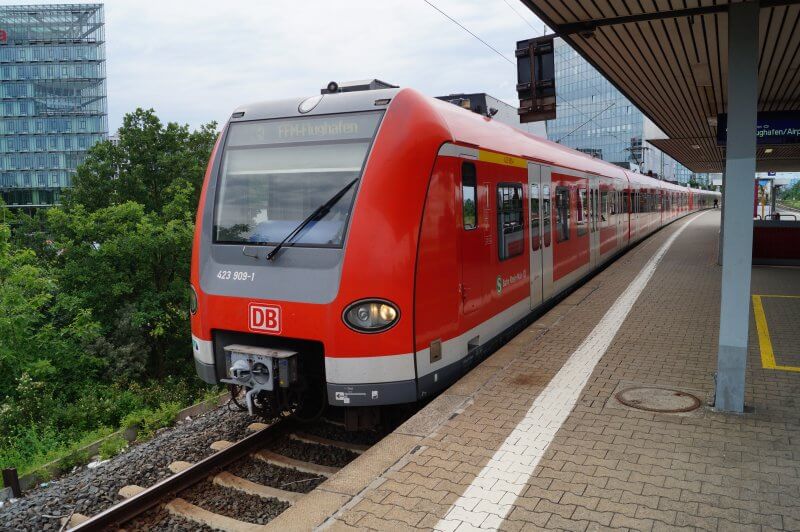
Potsdam is actually a suburb of the German capital, and the two cities are connected by the S-Bahn network of commuter trains. The station where the trains arrive in Potsdam is Potsdam Hauptbahnhof, and you can leave the capital from almost any S-Bahn station or from the central Friedrichstraße station.
Trains run 24 hours a day, approximately every 10 minutes. The journey from Friedrichstraße to your destination takes 40 minutes.
The ticket price is 3.40 €. You can buy it at vending machines at the stations, where you also need to stamp it. Since Potsdam is part of the transport zone of the German capital, travel to it is free of charge if you have a Berlin Welcome Card.
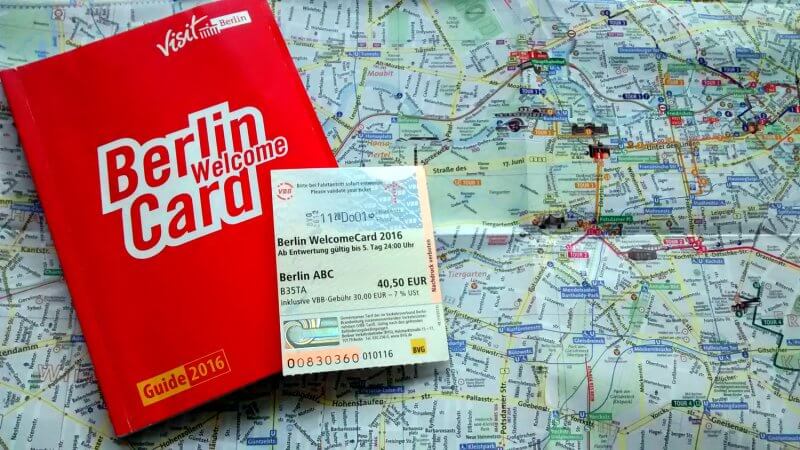
Regional trains RE and RB also run from the capital’s Friedrichstrasse station to Potsdam (lines RE1 and RB21 are suitable for this route). The journey by train takes a little less time (about half an hour), and the fare is the same. You can buy a ticket at the station ticket office or on the Rail Europe website, which specializes in railway routes across Europe.
Important! You can use the online travel planner for the Berlin railway network to see how to get from Berlin to Potsdam by train or electric train, and to find out when the next train departs from a specific station: https://sbahn.berlin/en/.

